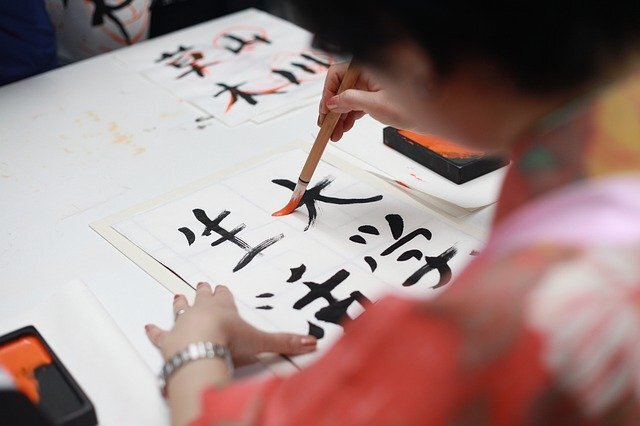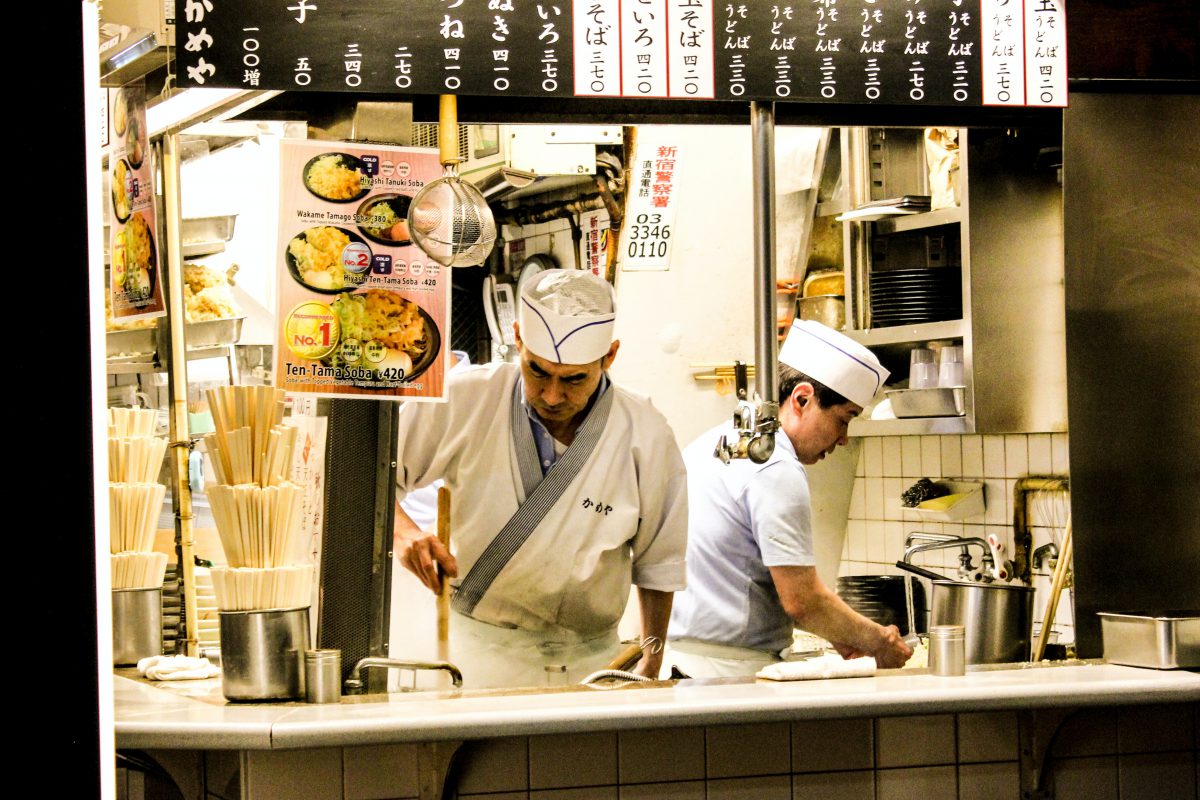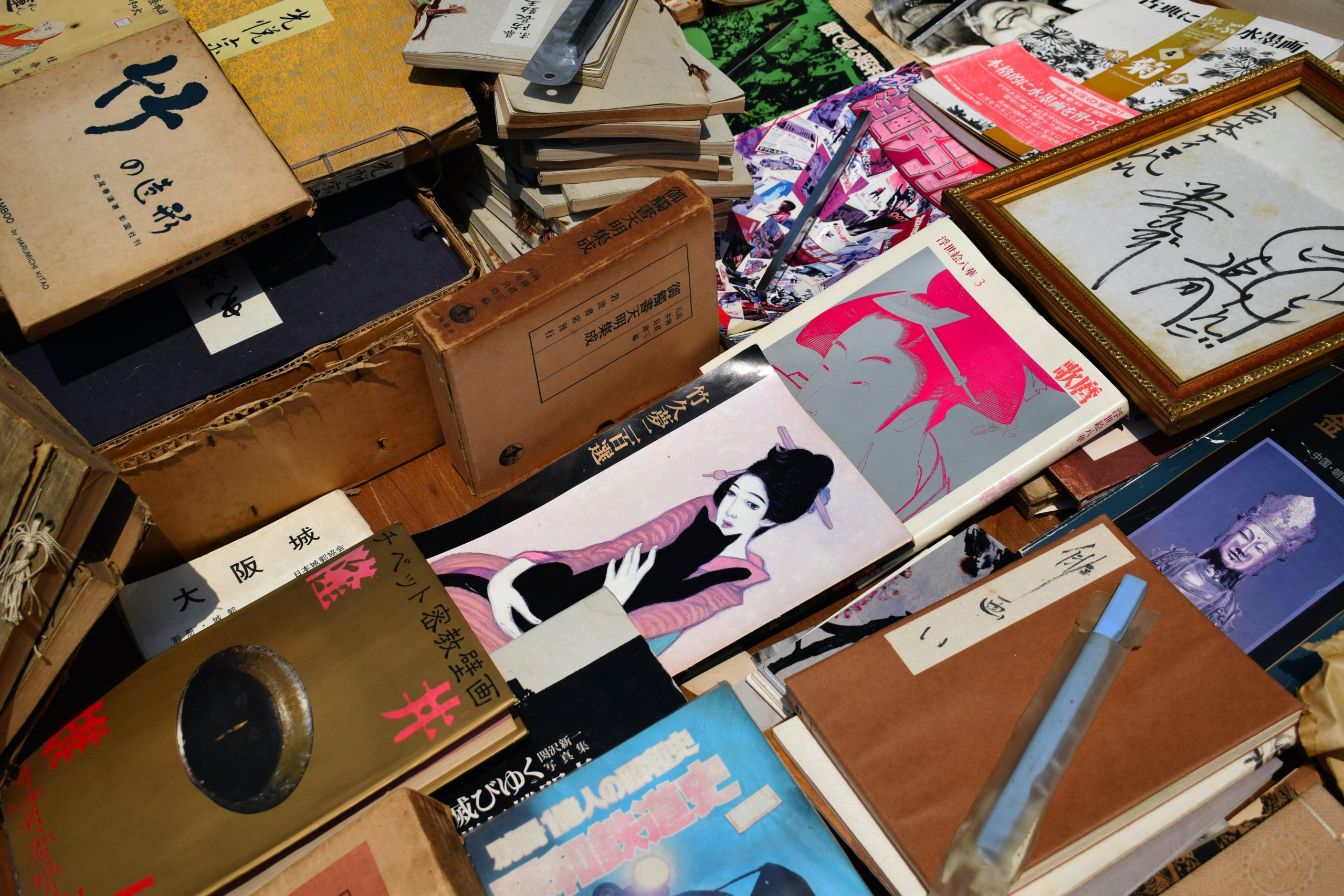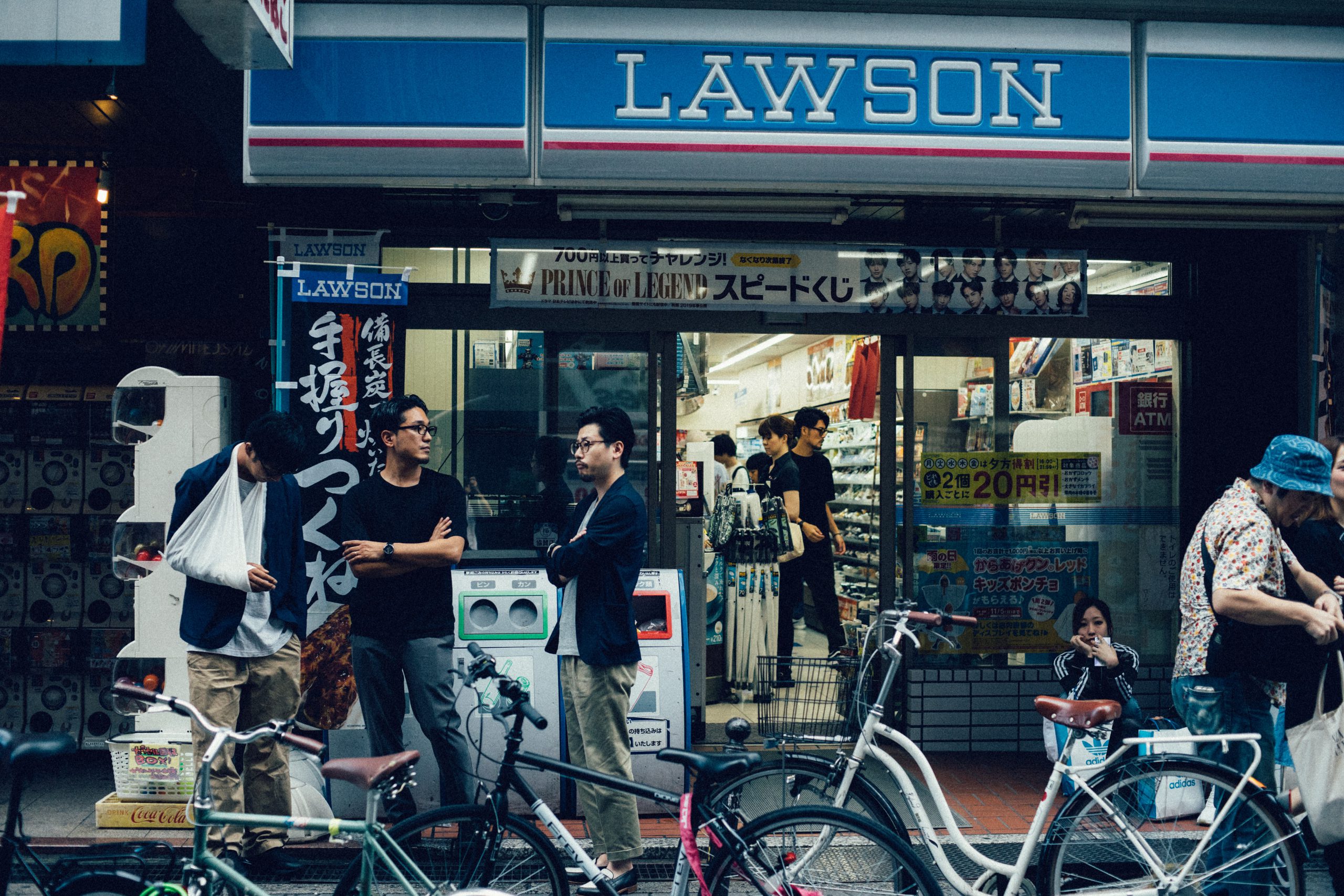It is often said that Japanese is one of the most difficult languages in the world. One of the reasons would be the fact that it basically consists of three different character sets: Hiragana (ひらがな), Katakana (カタカナ), and Kanji (漢字). Each of them has unique features, and can be used in sentences depending on the context.
Besides that, Japanese learners would face complicated grammar and also discourage them from continuing their journey to master the language. But hang in there, this article is a good starter for beginners who are interested in Japanese, or for those who are planning to visit Japan on their vacation. Let’s learn the concept of Japanese language and some basic Japanese phrases you can use on your Japan trip!
What is Hiragana?
Hiragana (ひらがな) is the most basic character in the form of Japanese writing. Children start to learn them at an early age in kindergarten or preschool.
It consists of 46 letters, each of which represents the corresponding alphabet used in Japanese writing. They are usually listed according to a Japanese alphabetical order starting with “あいうえお” (a i u e o).
It is said Hiragana was developed during the Heian period (794-1185), after Kanji was introduced from China to Japan for the first time in the 4th or 5th century.
They aimed to make new writing characters by simplifying Kanji, which convincingly explains why the shape of some Hiragana is similar to the corresponding Kanji.
It resulted in a tremendous development and flourish in Japanese culture such as literature, as notable female writers started to use Hiragana to produce historical works and stories.

In general, Hiragana is used for traditional Japanese words which were originally developed inside Japan. For example, “Sa-ku-ra” is spelled “さくら”, and “sa-mu-ra-i” can be “さむらい” in Hiragana.
You can make any Japanese sentences only with Hiragana.
In many cases, however, Japanese sentences are composed of the mixture of Hiragana and Kanji because it is much easier for Japanese people to read.
However, Hiragana is preferred in specific cases, including children’s books and announcements for foreigners.
This is because it is the first character that most Japanese learners start to study.
Hiragana also plays a role as particles. It is called “Joshi” (助詞) in Japanese, which is essential to connect every word such as nouns, verbs and adjectives.
What is Katakana?
Katakana (カタカナ) is another sets of characters in Japanese.
They might look similar to Hiragana, but they are actually more angular compared to the cursive shapes of Hiragana.
One of the distinctive differences between them is that Katakana is mainly used for foreign words imported from other countries. For example, “computer” is written “コンピューター” (co-n-pyuu-taa, and “Ha-m-baa-gaa” can be “ハンバーガー” in Katakana.
It means that with a better understanding in Katakana, you will be able to infer the meaning of Japanese sentences to a certain extent!

They consist of 46 signs just like Hiragana, which means they are much easier to learn than Kanji.
If you want to learn Japanese, try to memorize Hiragana and Katakana simultaneously as they are associated with each other in terms of the number of letters and sound.
Here are some Katakana words that you will probably encounter during your trip to Japan!
- コンビニ / Konbini (means “Convenience store” in Japanese)
- アプリ / Apuri (means “app” in Japanese)
- トイレ / Toire (means “bathroom” in Japanese)
- *You can also say “Otearai” (お手洗い), which sounds more polite
- ラーメン / Ramen (means “Ramen noodles” in Japanese)
- ピザ / Piza (means “Pizza” in Japanese)
- ビール / Bi-ru (means “Beer” in Japanese)
What is Kanji?
Kanji (漢字) was originally brought to Japan from China from 4th through 5th century.
As it started to spread across the country, numerous new Kanji were coined by ancient Japanese people according to their lifestyle and culture.
Today, there are countless numbers of Kanji and it is nearly impossible to learn all the Kanji that exist. The number of commonly used Kanji is 2,136 words and it takes 12 years to learn these Kanji for Japanese from elementary school to high school!

Kanji can be classified based on several factors.
Radical refers to one of the most important components of Kanji which usually can be found in the left part. It is called “Bushu” (部首) in Japanese, and Kanji is generally listed according to it in many Japanese textbooks that you can find at bookstores.
Number of strokes is another feature of Kanji you need to remember.
While the beautiful shape of Kanji fascinates Japanese learners around the world, it is true that some people find it too difficult to master. It also could be challenging, or even overwhelming for those who have little knowledge of Kanji to travel around Japan while surrounded by the complicated characters that can be found in every corner of the city.
Here are some useful Kanji/ idioms that will help you get ready for your trip to Japan!
Public Transport
- 空港 / Ku-kou (means “airport” in Japanese)
- 駅 / Eki (means “station” in Japanese)
- 切符 / Kippu (means “train ticket” in Japanese)
Tourist Attractions
- 寺 / Tera (means “temple” in Japanese)
- 神社 / Jinja (means “shrine” in Japanese)
Accommodation
- 旅館/Ryokan (means “inn” or “traditional Japanese hotel” in Japanese)
Basic grammar rules of Japanese
Word Order:
Japanese has different grammatical rules from other major languages such as English.
The basic word order starts with S+O+V, which stands for “Subject” (“主語” in Japanese), “Object” (“目的語” in Japanese) and “Verb” (“動詞” in Japanese).
For example, if you want to say “I love Japan!” in Japanese, it can be translated “Watashi wa Nihon ga sukidesu! (私は日本が好きです!)”, (Watashi=S, Nihon=O, Suki desu=V) *wa and ga= particles.
However, it is not actually necessary to specify the subject so you can form a sentence using only verbs. In fact, you can have an entire conversation without ever mentioning the subject. In addition, there are no plurals in Japanese, you just mention the number of items/things/people (after the object), so if you want to order 1 beer or 2 beers, ビール (Bi-ru) stays the same.
Keigo (敬語)
Keigo refers to an honorific form of Japanese that is often used in formal situations.
In Japan, the hierarchical relationship is severe on some occasions.
So it would be extra useful to remember some Keigo after you get the hang of the Japanese language.
Also, there are some simple Keigo expressions that you can use while traveling across Japan.
At the restaurant and hotel, usually people use Keigo with strangers. These phrases will help you not to be rude or offend someone but make the communication more smooth!
Here is a list of easy Japanese phrases with simple Keigo.
- When you talk to someone, you can always start with,
Sumimasen/すみません (means “Excuse me” in English) - When you need to ask directions, you can say,
~ wa, dokodesuka?/~は、どこですか? (means “Where is ~?” in English) - When you order at restaurants or cafes, tell them,
~ wo, kudasai/~を、ください (means “Can I get~?” in English) - Helpful shopping phrases include,
~ wa, arimasuka?/~はありますか? (means “Do you have~?” in English)
~ wa ikuradesuka?/~はいくらですか? (means “How much is ~?” in English) - When you want to thank someone,
Arigatou /ありがとう (“Thank you” in English)
Arigatou gozaimasu (Keigo for arigatou, which sounds more polite!)

Learn Japanese at home!
Go! Go! Nihon offers a 2 week online course where you can take Japanese lessons at any time you want at home. This is a perfect course for beginners who want to start learning basic Japanese. Variety of lessons including written lessons, audio recordings and role-play are included for this course, and you will also get to learn not only the Japanese language but its culture with demonstration videos. If you are planning to study in Japan or work in Japan, or just before traveling to Japan, this online course can be a good option to take as a first step to learn Japanese! You’ll get a certificate after finishing a course.
▶Buy Go! Go! Nihon Japanese Crash Course
Recommended books to learn Japanese

NIHONGO FUN & EASY Survival Japanese Conversation For Beginners by Ogata Yukiko and others

Let’s Explore HIRAGANA & KATAKANA by Bret Mayer

GENKI: An Integrated Course in Elementary Japanese I by Eri Bannoo and others
Japan Wonder Travel Tours
Japan Wonder Travel is a travel agency offering guided tours in Japan. From private walking tours to delicious Food and Drink tours, we will organize the best tours for you! If you want to explore around Japan to learn more histories and backstories of the area, our knowledgeable and friendly guide will happily take you to the best spots! Also, we can provide you with any assistance for your upcoming trip in Japan, so please feel free to contact us if you have any questions/need some help!
- Tokyo Fish Market Tour @Tsukiji – Enjoy Local Food and Drink
- Tokyo 1–Day Highlights Private Walking Tour (8 Hours)
- Ghibli Spots Tour (Online)
Hope this article motivates you to learn more Japanese and help those who want to travel to Japan in the future. Watching anime or series in Japanese will be a good way of learning Japanese culture and language at the same time. If you are stuck at home and bored yourself, let’s start learning Japanese!
Also read these articles below to learn more easy phrases!
▶Japanese useful phrases to use at restaurants
▶Useful Japanese expressions when traveling in Japan
Follow us on Instagram, Facebook and Twitter for more travel inspiration. Or tag us to get featured!
Happy travelling!
Stay informed of the best travel tips to Japan, the most exciting things to do and see, and the top experiences to have with the Japan Wonder Travel Newsletter. Every week we will introduce you to our latest content.
Other articles you might like



This post contains some affiliate links. When you click through and make a purchase we may receive some commission, at no extra costs to you.


